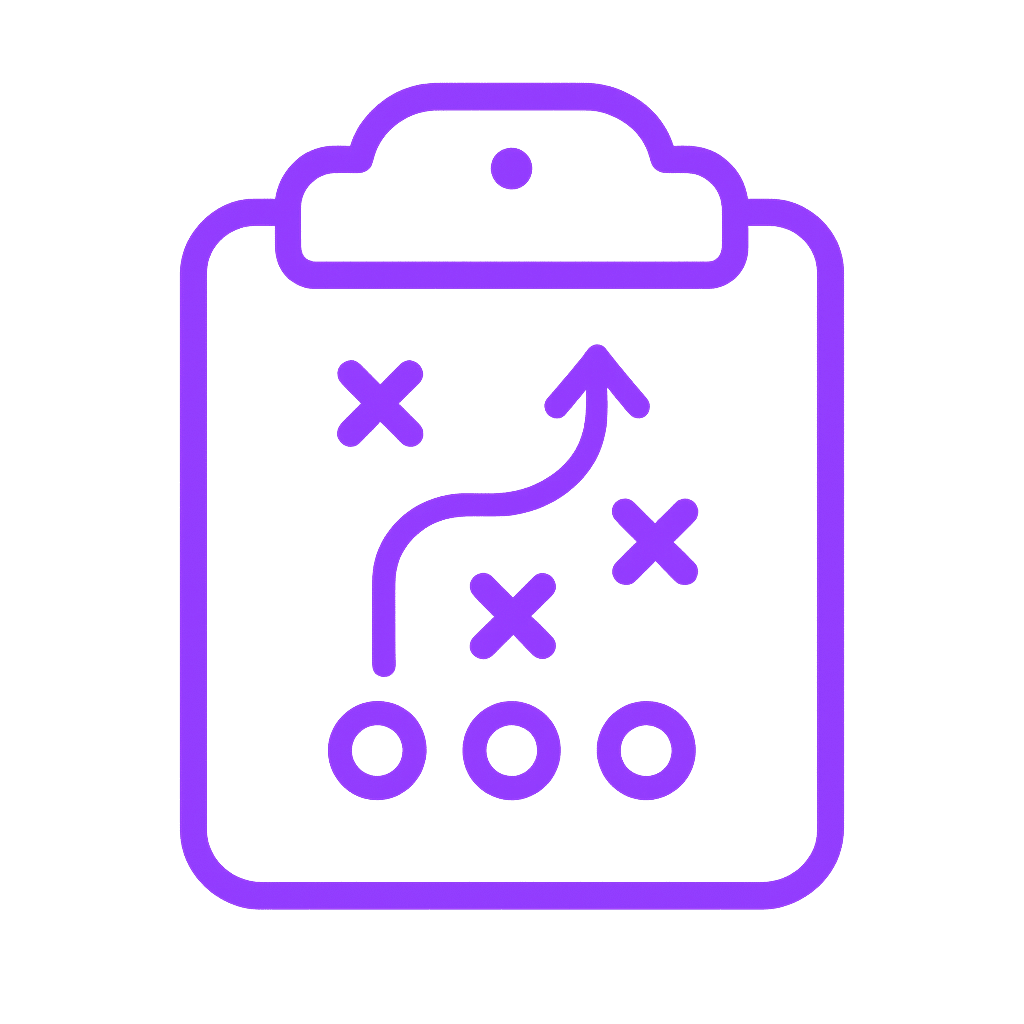Posted by Gigi J.K
in Ai
in Ai
The Hybrid Sales Revolution: Why AI Is the Key to Multichannel Success



Hybrid sales blends direct, partner, marketplace, and digital channels into one coordinated system. AI enables this by routing leads, resolving channel conflicts, aligning inventory with promises, and empowering partners. With proper measurement and governance, companies gain faster cycles, higher margins, and sustainable growth accelerated by ImpelHub and Virtina.

For more than a decade, “omnichannel” has been the buzzword in sales. The logic was simple: meet customers everywhere. The execution, however, was messy. Teams duplicated effort. Pricing clashed across platforms. Sales reps butted heads with partners. Marketing poured money into overlapping campaigns, often chasing the same buyers through different channels. The outcome is thinner margins, strained relationships, and a system that looked sophisticated on paper but brittle in practice. Many industries, especially manufacturing, have seen this play out first-hand. Our blog on Manufacturing Marketing: Failure & Fix explores how these challenges surface in manufacturing and what it takes to correct them.
Hybrid sales take a different stance. It’s not all about being everywhere all at once. It’s being in the right place at the right time with proper tactics. That means:
The principle is simple; the practice is not. Deciding which channel should own a lead, when to prioritize speed over margin, or how to prevent a partner from clashing with a direct rep. These aren’t easy calls. The complexity is beyond what spreadsheets or static rules can handle.
That is where AI comes into play. Artificial intelligence is not a tool added to the stack; it is the layer of orchestration, propelling data from across systems, making predictions, and setting guardrails. Hybrid sales are scalable only when intelligence sits in the middle.

Hybrid sales open doors to more opportunities, but they also multiply complexity. A single customer’s journey can weave across digital platforms, a reseller’s pitch, and a direct sales conversation, all before the first purchase order is signed. Every interaction leaves a data trail, but without integration, it’s a jigsaw puzzle missing half its pieces.
This fragmentation creates three big problems:
Touchpoint overload: Buyers research online, engage a partner, and still expect a personal call from a rep.
AI solves this not by automating decisions blindly but by acting as the conductor of the orchestra. It takes fragmented signals like capacity, win rates, and customer context and aligns them into a coherent decision.
This is more than efficiency. It’s about balance. When intelligence keeps the system in harmony, every channel contributes to growth instead of undermining the others.
And one of the clearest places to see this orchestration in action is in lead and opportunity routing, the lifeblood of hybrid sales.
The first place to operationalize this coordination is lead and opportunity routing.

In hybrid sales, where a lead lands can make or break the outcome. Send a strong opportunity down the wrong path, and the effects show up fast. Deals drag out longer than they should, margins shrink, partners lose patience, and the trust you’ve worked hard to build starts to wear thin. Traditional “rules of thumb” like “all enterprise accounts go direct” or “small accounts go to marketplaces” are no longer enough. Buyers and deals these days are simply too dynamic for across-the-board mandates.
Smarter routing relies on multiple signals working together:
But the most sophisticated systems go a step further: they incorporate capacity awareness. It’s not just about who could win a deal, but who is actually available and equipped to handle it. Let’s assume some real-world scenarios:
There’s also a less obvious, yet vital, factor: fairness. Smaller partners or newer reps can easily get overlooked when distribution is influenced by office politics or rigid policies. Smart routing balances opportunities across the ecosystem, ensuring allocation is driven by performance and capacity rather than favoritism.
When routing is done right, it doesn’t just improve efficiency. It builds trust. Each opportunity has a better chance of success, partners feel respected, and the overall sales ecosystem remains healthy. Once leads are flowing to the right channels, the next challenge becomes keeping pricing, promotions, and deal ownership aligned, because even perfect routing can falter without clear orchestration.
Channel conflict is often the silent and costly enemy in hybrid sales. If you have direct reps, distributors, and online channels all competing for the same account, all the teams are working hard, but none has the least idea of what the others are doing. This results in redundant effort, vanishing margins, and relations becoming strained. If left unaddressed, the conflict doesn’t just hit the bottom line. It slowly eats away at customer trust and chips away at the loyalty of your partners.
This is where incrementality modeling comes into play. Instead of guessing which channel will win a deal or relying on rigid rules, companies can simulate multiple scenarios to identify the most profitable path:
Even with this intelligence, decisions need guardrails to stay fair, compliant, and transparent:
Governance ties the system together. High-value deals or exceptions still require human oversight, and every recommendation comes with a clear rationale, building trust among reps, partners, and teams alike.
When predictive modeling and enforceable guardrails work in tandem, channel conflict transforms from a constant friction point into a managed process that protects margins and preserves partner confidence. But even perfect alignment on channels and pricing is meaningless if a company can’t deliver on its promises, which is where inventory-aware selling becomes essential.
Closing a deal is only half the battle. Ultimate triumph comes from having the ability to deliver it reliably. In hybrids, real-time inventory and delivery constraints need to be considered in every proposal. If you commit to a deal that you can’t fulfill on time, then you run the risk of alienated clients, loss of reputation, and forfeited future business.
This is where inventory-aware selling steps in, aligning sales decisions directly to supply chain realities. It ensures that every quote, bundle, and promotion can actually be delivered. Practical applications include:
An often-overlooked opportunity lies in dead stock liquidation. Every company has slow-movers that continuously erode margins behind closed doors. Intelligent systems can find better channels, like secondary marketplaces or targeted partner networks, to move these products without hurting brand perceptions or cannibalizing their flagship lines.
By integrating inventory awareness into selling, companies reinforce their promise to serve. Customers feel confident knowing that what they order will arrive as expected, creating not just immediate sales but enduring loyalty across all channels.
Although reliability in fulfillment is critical, it’s not the whole picture. Sustainable growth also relies on how well partners and marketplaces are empowered, such that every channel contributes to revenue and customer confidence.
Partners and marketplaces are the engines that drive hybrid sales growth. Resellers and distributors gain access to highly specialized markets you wouldn’t access otherwise, and marketplaces give customers an easy, convenient way to purchase. But here’s the catch: without careful coordination, these channels can end up stepping on each other or on your direct sales efforts.
Intelligent enablement is the difference between friction and flow. It’s about guiding partners and marketplaces with insight, not just directives. For example:
Shadow channels are a hidden layer that most businesses ignore, which lies beyond these visible channels. Specialized platforms, niche industry forums, and RFQ portals frequently produce deals that are overlooked, resulting in blind spots in the customer journey. A more complete and accurate picture of consumer behavior can be obtained by capturing and attributing these signals.
Channel Type | Intelligent Focus | Risk if Mismanaged |
Partners | SKU prioritization, MDF allocation | Lost trust, underperformance |
Marketplaces | Listing optimization, pricing guardrails | Margin erosion, cannibalization |
Shadow Channels | Signal detection, attribution | Missed revenue, blind spots |
When partner enablement and market strategy are fueled by data-driven insights, the payoff is obvious: scaled reach, defended margins, and richer, more trusting relationships across all channels.
But here’s the thing. These strategies don’t live in a vacuum. They only matter if you can measure and govern them well, which brings us directly to the next set of discussions: performance, governance, and defining what “good” actually means.
Enablement only creates value when its impact is measured and governed
What is hybrid sales?
Hybrid sales blends direct, partner, marketplace, and digital channels into one system, with each opportunity routed to the most effective path.
How does AI improve hybrid sales?
AI scores and routes leads, enforces pricing and channel guardrails, and ensures fairness in opportunity distribution, reducing conflict and protecting margins.
How can inventory aware selling help?
By linking sales offers to real-time stock and delivery capacity, it ensures reliability, reduces backorders, and even finds low-risk channels for clearing slow-moving stock.
What KPIs measure hybrid sales success?
Key metrics include margin per channel, sales cycle velocity, conversion lift, and customer stickiness through renewals and upsells.
In hybrid sales, measurement can’t sit on the sidelines. Vanity metrics like raw lead counts or email open rates might look good in a weekly report, but they don’t answer the real question: is the system actually driving sustainable growth? The focus needs to shift toward outcomes that capture both efficiency and impact:
You need more intelligent strategies if you want to truly escape superficial reporting. Strategies like uplift modeling and incrementality testing pinpoint the channels or motions that truly caused the outcome, not the first or the last touch. That kind of specificity puts resource allocation so much farther upstream.
But measurement alone doesn’t keep the system on track. Governance provides the guardrails. It works best when companies build in practices such as:
Put together, these practices do more than enforce rules. They create trust across teams, partners, and leadership that the system is fair, resilient, and built to last.
When measurement and governance work hand in hand, companies consistently see results like:
Achieving these gains doesn’t come from stringing together isolated tools. It requires a structured system that links strategy directly to execution, precisely where ImpelHub creates an edge.
Turning these controls into a working system requires a plan and a build partner
Hybrid sales isn’t about adding more tools or technology. It’s about creating a framework that turns complexity into clarity. ImpelHub addresses this through strategy design and intelligence-enabled playbooks that guide teams from scattered efforts to a structured, measurable system for growth.
These playbooks define how each sales motion should operate, identify where guardrails are required, and set clear standards for measuring performance. They transform hybrid sales from a tangled web of channels into a cohesive, executable strategy.
Some of the standout capabilities include:
For organizations ready to modernize, ImpelHub offers the Hybrid Sales Readiness Sprint. In 90 days, businesses gain a validated plan, measurable KPIs, and an initial set of activated practices. The sprint provides confidence that hybrid sales can be profitable, scalable, and sustainable, turning complexity into tangible results that teams can execute reliably.
Let’s be honest, the era of chasing “omnichannel everywhere” is behind us. What companies face today is far more nuanced: a hybrid sales environment where direct teams, partners, marketplaces, and digital self-serve channels all overlap. And unless it’s carefully managed, that overlap doesn’t create efficiency; it creates duplication, friction, and wasted energy that eats into margins and damages trust.
The way forward isn’t piling on more rules. It’s building intelligent orchestration into the system. That means opportunities are routed with clarity, pricing and channels move in sync, inventory realities shape promises before they’re made, and partners know they can rely on fair treatment. With governance and measurement in place, sales teams aren’t second-guessing the process. They can see why decisions were made and trust the outcomes.
The companies that get this right enjoy very real advantages: shorter sales cycles, stronger margins, and customers who stick around longer. Those who cling to fragmented, manual processes? They’ll find themselves outpaced by competitors who move faster, waste less, and build trust as a matter of discipline.
The truth is, the hybrid sales revolution isn’t a future state. It’s already here. The real winners won’t be the ones who simply plug in another tool; they’ll be the ones who connect strategy, execution, and governance into a single system that balances efficiency with fairness. That’s exactly where ImpelHub and Virtina step in, providing the frameworks and technical bridge to turn scattered efforts into sustainable, repeatable growth.
Hybrid sales is no longer a pilot program. It’s a strategic imperative. And the companies willing to embrace it with intelligence and rigor will be the ones setting the pace for the next era of B2B growth.
Hybrid sales is a coordinated approach that blends multiple sales channels—direct teams, partners, marketplaces, and digital self-serve—into one system. Instead of trying to be everywhere at once, hybrid sales ensures each opportunity is matched with the channel that delivers the best outcome for the customer and the business.
AI improves hybrid sales by acting as the orchestration layer. It routes leads to the right channel, adapts pricing and offers based on real-time conditions, enforces guardrails like deal registration and pricing policies, and ensures fairness between direct reps and partners. This reduces conflict, protects margins, and increases conversion rates.
Omnichannel sales focus on being present in every possible channel, often leading to duplication and channel conflict. Hybrid sales are more deliberate: it balances channels strategically, ensuring each one plays a defined role in serving customers without undermining the others.
The most important KPIs include:
Conversion lift (improvement over baseline)
These metrics reveal whether hybrid sales strategies are efficient and sustainable.
ImpelHub provides strategy design and AI-enabled playbooks that define how hybrid sales should operate. It helps companies prioritize which customer segments to route to each channel, identify where guardrails are most valuable, and establish KPIs. Paired with Virtina for technical integration, ImpelHub ensures strategy moves from planning to execution in a structured 90-day sprint.

2 combos (1 competitor × 2 dimensions)
20 combos $5 per additional combo
100 combos $4 per additional combo
280 combos $3 per additional combo

7 Steps / 8 – 10 days / 2 – 3 hours of your time
Maximize your impact with ImpelHub’s Growth Lever Identifier—our AI-powered system that discovers your single biggest growth lever and accelerates your success. By analyzing your revenue streams, marketing channels, and core metrics, it highlights the most effective path to scalable growth and pinpoints your highest-ROI strategy, so you can focus on what truly matters, multiply your revenue, and stay ahead in today’s competitive market. Our clear, data-driven action plan ensures you can scale faster and more efficiently than ever.
Insight360, part of the “Your Business” pillar in the Business Brain/Context framework, delivers data-driven insights across 9 categories and 40+ business aspects, including market positioning, competition, revenue, trends, and brand identity.
It drives two key outputs:
With a multidimensional business view, Insight360 helps optimize positioning, enhance engagement, and accelerate growth.
Insight360+ expands on Insight360 with 15 additional dimensions, offering a deeper analysis of business strategy. It provides a self-reflective framework to uncover opportunities in:
With Insight360+, businesses refine strategies, strengthen positioning, and drive sustainable growth.
FanScope is a comprehensive catalog of buyer types, categorized by 10 key attributes, helping decision-makers assess and refine target audiences before segmentation.
As the first step in segmentation, FanScope informs:
By analyzing buyer roles, revenue segments, and purchase probabilities, FanScope enhances targeting, optimizes resources, and improves sales and marketing efficiency.
The Segmentation Module enhances customer targeting with Rated ICPs, Personas, and Firmographics (B2B), assessing each ICP across 22 attributes, including:
ICP Scoring evaluates profiles on 10 numerical dimensions, enabling businesses to prioritize high-value targets efficiently.
FoeScope is a competitive analysis framework that evaluates competitors across three revenue segments—small, medium, and large—relative to the business’s revenue. It assesses:
As a precursor to CounterEdge, FoeScope helps businesses identify and categorize key competitors, setting the stage for deeper competitive strategy development.
CounterEdge analyzes competitor growth strategies, their impact on the business, and countermeasures to stay competitive. It evaluates:
By leveraging CounterEdge, businesses can anticipate threats, mitigate risks, and implement winning strategies.
NextMove is a growth strategy framework that helps businesses identify, evaluate, and implement high-impact strategies. Each strategy is numerically rated across 10 dimensions, similar to ICP Rating, to prioritize the most effective paths for expansion.
With NextMove, businesses gain a data-driven approach to strategic growth, ensuring scalability, market expansion, and long-term success.
Launch-Execution Blueprint creates high-level execution plans for growth strategies, prioritizing them based on impact, feasibility, and business alignment.
By leveraging Launch-Execution Blueprint, businesses can streamline execution, focus on high-impact strategies, and drive measurable growth.
Maximize your impact with ImpelHub’s AI-powered Growth Lever Identifier. By analyzing revenue streams, marketing channels, and core metrics, it uncovers your biggest growth lever and highest-ROI strategy.
With a clear, data-driven action plan, you can focus on what matters, scale faster, and stay ahead in today’s competitive market.
Maximize your impact with ImpelHub’s Growth Lever Identifier—our AI-powered system that discovers your single biggest growth lever and accelerates your success. By analyzing your revenue streams, marketing channels, and core metrics, it highlights the most effective path to scalable growth and pinpoints your highest-ROI strategy, so you can focus on what truly matters, multiply your revenue, and stay ahead in today’s competitive market. Our clear, data-driven action plan ensures you can scale faster and more efficiently than ever.
Feature Gap Analysis is a powerful tool within ImpelHub that identifies missing or desired features based on the needs and expectations of the target audience. By leveraging Business Brain, it ensures that feature recommendations are strategically aligned with business goals and market demand.
Key Benefits:
Identifies Missing Features – Pinpoints gaps in the product or service offering.
Aligns with Target Audience Needs – Ensures features meet user expectations.
Prioritization via Impact Scoring – Helps decision-makers invest wisely.
Data-Driven Scoring Mechanism
Each feature is rated across five numerical dimensions, enabling businesses to prioritize development efforts effectively:
Revenue Boost
Cost Reduction
Customer Acquisition
Customer Retention
Customer Satisfaction
By leveraging Feature Gap Analysis, businesses can make informed investment decisions, enhance their product-market fit, and drive customer engagement and growth
UXI (User Experience Investigation) is a UI/UX audit framework that evaluates core business pages with unparalleled depth, powered by ImpelHub Audit. Unlike standard audits, ImpelHub leverages Business Brain, ensuring that recommendations are contextually aligned with the company’s strategy, market position, and growth objectives.
Key Audit Components:
Feature & Objective – Identifies key UI/UX elements and their purpose.
Details & Justification – Explains audit findings in a business-relevant manner.
Impact & Area – Evaluates influence on user experience.
Rationale – Context-driven reasoning for suggested improvements.
Impact-Driven Scoring Mechanism
Each UI/UX strategy is numerically rated across five dimensions, helping decision-makers prioritize investments:
Revenue Boost
Cost Reduction
Customer Acquisition
Customer Retention
Customer Satisfaction
This data-driven scoring allows businesses to allocate resources effectively, ensuring maximum ROI on UI/UX improvements and driving sustained growth
Detailed Execution Blueprint is a task list and project roadmap that breaks down high-level strategies into step-by-step, week-by-week execution plans, ready for team assignment and implementation.
Key Features:
Detailed Task Breakdown – Converts strategies into actionable steps.
Week-by-Week Execution Timeline – Ensures structured and phased implementation.
Team Assignments – Each plan is ready to be assigned to the relevant team for execution.
Operational Clarity & Accountability – Provides a clear roadmap to track progress.
By leveraging Launch-Detailed Plan, businesses can ensure smooth execution, improve efficiency, and drive successful implementation
FanScope is an extensive catalog of potential buyer types, both direct and indirect, categorized using 10 key attributes. It helps decision-makers identify, evaluate, and include or exclude buyer types before the segmentation process.
As the first step toward segmentation, FanScope informs:
ICP (Ideal Customer Profile) Definitions
Persona Development
Firmographics (B2B segmentation)
ICP Scoring
By analyzing buyer roles, revenue segments, pain points, and purchase probabilities, FanScope enables businesses to refine their target audience, optimize resource allocation, and improve sales and marketing efficiency.
The Segmentation Module refines customer targeting through Rated ICPs, Personas, and Firmographics (B2B). Each ICP is assessed across 22 attributes, covering:
Profile & Behavior – Segment, characteristics, decision-makers, and buying behavior.
Business Fit – Pain points, goals, product needs, and purchase drivers.
Engagement Factors – Technology, content consumption, marketing channels, and objections.
Strategic Insights – Value proposition, competition, and customer service needs.
ICP Scoring rates each profile on 10 numerical dimensions, helping decision-makers quickly prioritize the best targets for sales and marketing strategies
FoeScope is a competitive analysis framework that identifies and evaluates competitors across three revenue segments—small, medium, and large—relative to the business’s revenue. It assesses competitors based on:
Key Products/Services – Most similar offerings.
Geography – Market overlap.
Target Audience – Shared customer base.
Similarity Score & Reasoning – Measures alignment with the business.
FoeScope serves as a precursor to CounterEdge, laying the groundwork for deeper competitive strategy development by helping businesses identify and categorize their most relevant competitors
CounterEdge analyzes competitor growth strategies, their impact on the client’s business, and countermeasures to stay competitive. It evaluates:
Competitor Strength & Market Impact – Key advantages and threat level.
Affected Business Touchpoints – Areas influenced by competition.
Adaptation Strategy – Actionable countermeasures.
Impact Grade & Rationale – Severity of threat (1-5).
Potential Business Benefits – Strategic opportunities.
By leveraging CounterEdge, businesses can anticipate threats, mitigate risks, and implement winning strategies.
NextMove is a growth strategy framework designed to help businesses identify, evaluate, and implement high-impact strategies. Each strategy is numerically rated across 10 dimensions, similar to ICP Rating, allowing decision-makers to prioritize the most effective paths for expansion.
Key Assessment Areas:
Strategy Type, Objective & Target Audience – Defines the approach, aligns with Ideal Customer Profiles (ICPs), and ensures relevance to market needs.
Key Tactics & Content Marketing – Outlines the execution plan, including marketing initiatives to drive engagement.
Required Resources & Risk Assessment – Identifies necessary investments, potential risks, and feasibility.
Timeline & Measurement Metrics – Provides a structured roadmap for execution and tracking success.
Relevance (%) & Potential Impact – Scores strategies based on alignment with business goals, market trends, and competitive landscape.
By leveraging NextMove, businesses gain a data-driven approach to strategic growth, enabling them to quickly assess and implement the most effective strategies for scalability, market expansion, and long-term success.
GTM/Scale Up Playbook creates high-level execution plans for selected growth strategies, ensuring effective implementation. It prioritizes strategies based on impact, feasibility, and alignment with business objectives.
Key Components:
Phases – Defines the execution stage.
Strategy Score – Numerical rating for prioritization.
Strategy Suggestions & Rationale – Recommended actions with justification.
Highlights – Key takeaways and strategic advantages.
Related Strategy – Links to complementary approaches.
Targeted ICPs (ICP Phase) – Aligns execution with the right customer segments.
By leveraging GTM/Scale Up Playbook, businesses can streamline execution, focus on high-impact strategies, and drive measurable growth.
Insight360 is a key component of the “Your Business” pillar within the Business Brain/Context framework. It delivers data-driven insights across 9 key categories, covering 40+ critical business aspects, including market positioning, competitive landscape, revenue analysis, industry trends, and brand identity.
These insights drive two strategic outputs:
Custom Growth Strategies – Tailored plans developed with AI, Impelian, Impelist, and human expertise to support business expansion and address key challenges.
Contextual UI/UX Audit – Identifies feature gaps and aligns product offerings with market needs.
Insight360 provides a multidimensional understanding of the business, industry, and competitive landscape. By leveraging these insights, businesses can optimize market positioning, enhance customer engagement, and accelerate growth.
Insight360+ enhances Insight360 by analyzing a business at a deeper level through 15 additional dimensions. It provides a self-reflective framework to uncover strategic opportunities in:
Sales & Revenue Optimization – Pricing models, sales processes, and client strategies.
Market & Digital Presence – Online marketing, industry positioning, and partnerships.
Innovation & Technology – AI /Tech integration and product/service development.
With Insight360+, businesses gain a more comprehensive perspective to refine strategies, strengthen market positioning, and drive sustainable growth.

Founder & CEO

Co-Founder & Chief Revenue Officer
Please enter your email to download the Sample Score Card.
Please enter your email to download the playbook.
Unlock exclusive tools for growth